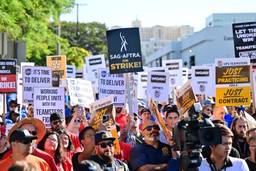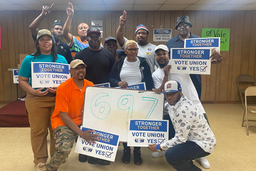Despite the financial downturn in Japan, the unionization rate in the world’s second largest economy actually rose for the first time since 1975, according to the country’s Ministry of Health, Labor and Welfare.
The estimated percentage of union members among all employees for 2009 was 18.5 percent, up 0.4 percent from last year. While the increase is marginal, it marks the first time in 34 years in which union membership showed consecutive yearly growth.
The findings parallel historical and recent labor trends in the U.S. Like other industrialized nations, union density in Japan has been declining in the postwar era. In Japan, the number of workers joining unions peaked in 1949 at 55.8 percent, steadily declining over the last few decades to less than 20 percent in 2003. Similarly, the percentage of U.S. employed workers in unions hit its zenith in 1954 at 28.3 percent, according to a report by Cornell University’s School of Industrial and Labor Relations. By 2003, just 11.5 percent of employed workers were union members.
The recent uptick in Japan also mirrors U.S. statistics. Over the past two years, the U.S. unionization rate increased from 12 percent to 12.4 percent, according to a report by UCLA’s Institute for Research on Labor and Employment.
“The loss of so many private sector jobs may have contributed to the relative increase in unionized workers, since public sector jobs have higher rates of unionization than does private sector employment,” the report said.
Despite the rising rate of union members, the details explain why the news isn’t exactly positive. As job losses in the U.S. are an unfortunate corollary of rising union ranks, in Japan, a tighter labor market and growth of irregular workers contributed to the increase in numbers. Unemployment rose to a postwar high of 5.7 percent in July, as more jobs were lost and employers began looking for temporary workers amid the recession, a phenomenon not far from recent hiring practices in the U.S.
If Japan’s past is any indicator, the deregulation-era policies enacted by former Prime Minister Junichiro Koizumi in 2004 has led to a steep rise in temporary workers, creating a stratified labor market where predominantly younger workers earn less pay and have fewer benefits.
Companies have continued to hire temp workers during the recent global financial crisis, as many were hesitant to hire full-time workers for fear of dragging down profits. Part-timers who joined unions increased into the double digits (13.7 percent) to 700,000 this year.
The current Prime Minister Yukio Hatoyama has a difficult balancing act to fulfill campaign promises and stimulate economic recovery. Shortly before his historic election in August, he pledged to create a more fraternal society that shifts away from the “globalized brand of capitalism” and earned the backing of the country’s largest labor group, Rengo.
The group’s head, Nobuaki Koga, had the Prime Minister’s ear shortly before he unveiled his $81 billion stimulus package in early December that included employment subsidies. Six of his cabinet members are former union officials. The administration even considered legislation to ban temp workers in hopes of spurring companies to hire full-time employees.
With a labor-friendly Prime Minister in office, unions can breathe a little easier. But the statistics show that despite an increase in unionization rates, the contracting labor market and rise in temp workers still show the challenges facing workers in this economy, something both American and Japanese workers know all too well.







